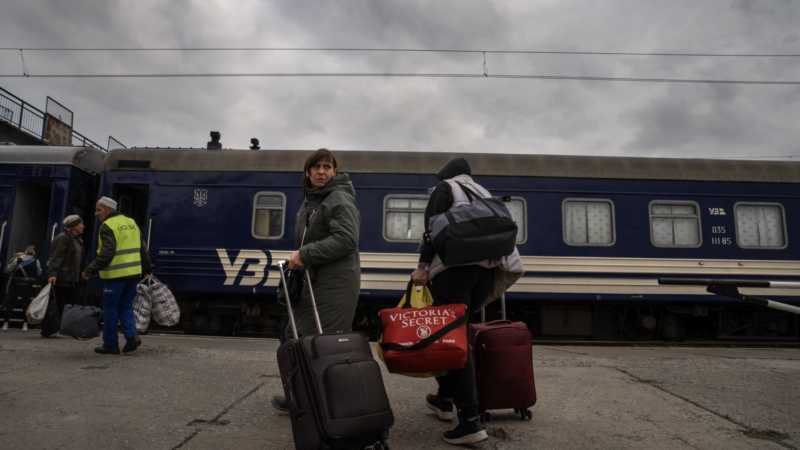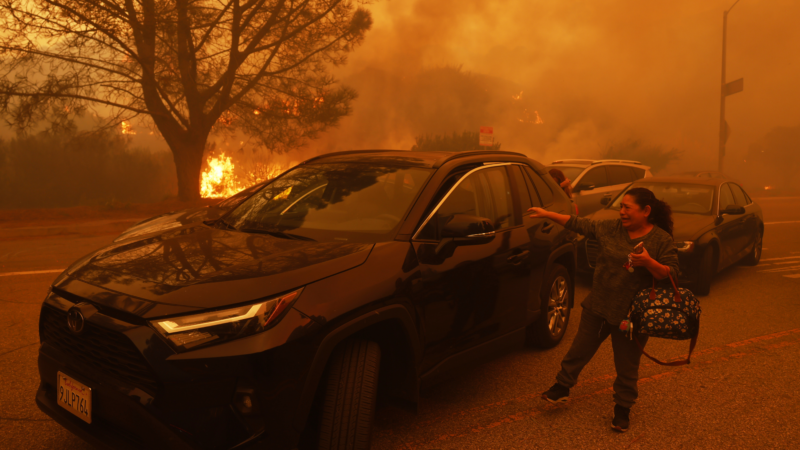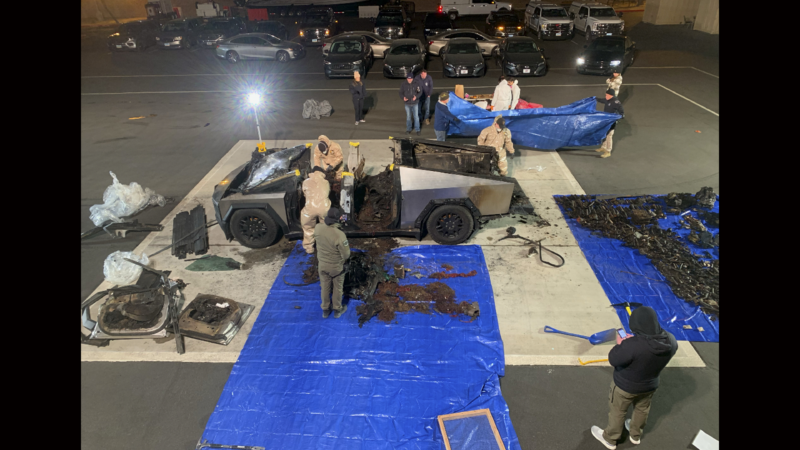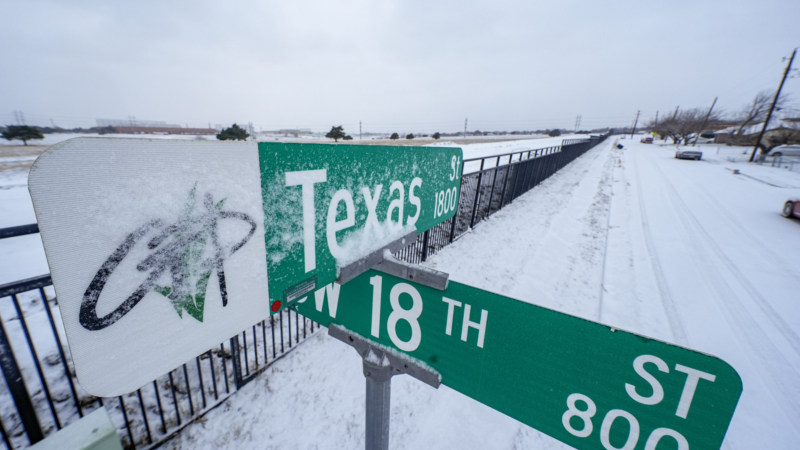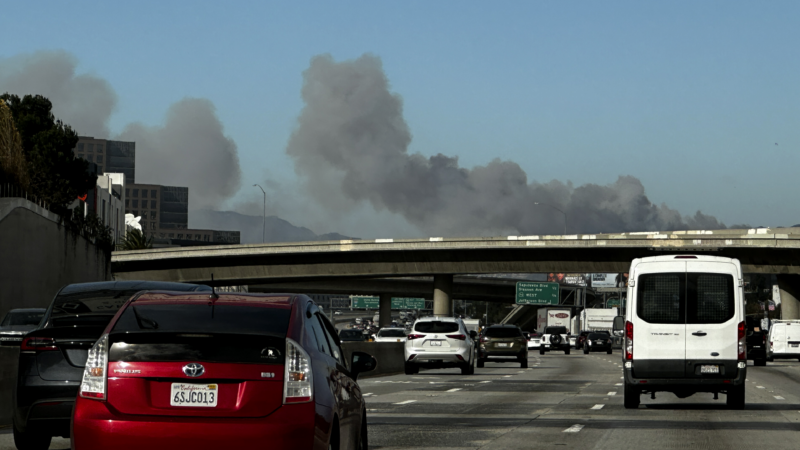Ukrainians face another harsh winter as Russia attacks coal country
Weary Ukrainian civilians escaping war arrive every day. They come from the chain of coal mining towns that line this east-west highway. The E-50 connects Dnipro, Ukraine’s fourth-largest city, with Donetsk in the eastern Donbas region, but it now ends partway, in Pokrovsk, an increasingly dangerous and embattled city at the edge of the front line.
Most of the people arriving here are transferred to trains heading farther west to connect with family members. Others have nowhere to go, and stay in a theater, now serving as a shelter for displaced people in Pavlohrad, another coal mining city.



This coal corridor leading to Dnipro is now also the path advancing Russian forces could take deeper into Ukraine — should Pokrovsk fall. Freshly dug defensive line positions can be seen in fields outside of Dnipro. Ukraine’s mining towns are an essential link of the dwindling supply chain keeping the national steelworks industry afloat. The industry is already operating at minimal capacity, producing approximately 7 million metric tons this past year, around a third of the output level before Russia’s full-scale invasion in 2022. Residents of the region are traumatized by the daily barrage of missiles and attack drones. Many have moved away. Miners are now fighting and dying at the front, leaving the mines short-staffed.
“I cannot sell, I cannot work at home in Pokrovsk,” says Lilia Lymanska, 53, who now sells her home-cured meats to shoppers in Dobropillya, another coal mining town, 18 miles north of her hometown of Pokrovsk. “It is too loud, the explosions, the drones. Too dangerous. We cannot stay.”



Dobropillya is hardly a safe haven. The city remains a frequent target. Cars, loaded with evacuees and their belongings were leaving the city on a recent visit by NPR. The cultural center is now a distribution point for humanitarian aid and food for those in need.
Dobropillya’s state-owned coal mines remain open but their output is minimal compared to those in Russian-occupied areas and Pokrovsk, where two female miners were killed in a recent missile attack.
The quality of the coal matters for the steel producers. Many miners say Pokrovsk has the region’s best coal. How long its mine can remain operating under the steady barrage of missiles is unknown.



People also use the coal in their everyday lives. “This is terrible coal, they gave us awful coal. It is full of stones and we need twice as much to cook and heat the house,” Daria Kuznetsova complains in her kitchen, as a pot of soup simmers on the coal-heated stove. She and her husband live in a home at the foot of one of Dobropillya’s many slag heaps. This one is nearly 500 feet high. Her husband, Voldymyr Kuznetsov, is a retired coal miner and as part of his pension receives a season’s worth of coal each year. A few of their cats roam around them as they pick stones out of the coal pile. Power outages at their home are common and running water cuts out several times a day.


In Pavlohrad and the neighboring city of Ternivka, demonstrators lined the road under a heavy overcast sky holding posters of loved ones who are missing or being held prisoner by Russia. It is a sad ritual that occurs in towns across the country most weekends. Victoria Yakhno wept while raising an image of her missing 24-year-old son, Maksym Yakhno, up to passing cars at Pavlohrad’s main square, some honking their horns in solidarity. He has been missing since March.



Some residents find solace in candlelit churches. The parishioners, mostly women and elderly, slowly file past the images of saints to light candles as offerings. The lack of men is evident along this stretch of road. Most are fighting, many have been killed. The war veterans’ section in the cemetery at the edge of Pavlohrad has rows of fresh graves.
Paranoia runs deep. There is a strong fear of being conscripted into the Ukrainian military and of pro-Russia collaborators. On a recent visit to the Pavlohrad public market, a seller summoned the police, accusing this NPR team of journalists of being spies. The episode was quickly resolved by the market’s supervisor who had given the team permission to document the sparse offerings on sale.



Russia’s strategy going into each winter of this nearly 3-year-old conflict is to inflict as much damage on Ukraine’s energy sector as possible. This season has been no exception. There is less coal for people’s homes across Ukraine, including in Ukrainian President Volodymyr Zelenskyy’s hometown of Kryvyi Rih, a steelworks hub. Russian forces are bombing the steel smelters regularly.

“It is hard to stay,” says Lymanska, the meat vendor at the Dobropillya market, “life here is becoming impossible.”
Photos: Thousands in Los Angeles evacuate as wind-fueled Palisades Fire quickly worsens
More than 30,000 people in Los Angeles County have been ordered to evacuate as the Palisades Fire blazed through the Pacific Palisades community, fueled by intense Santa Ana winds.
Man who exploded Cybertruck in Las Vegas used ChatGPT in planning, police say
The highly decorated soldier who exploded a Tesla Cybertruck outside the Trump hotel in Las Vegas used generative AI including ChatGPT to help plan the attack, Las Vegas police said Tuesday.
Wild weather brings snow to the South and Santa Ana winds to the West
As the South prepped for snow and more cold starting Wednesday, residents in Southern California faced off with hurricane-strength winds.
What to know about Trump and his keen interest in Greenland
President-elect Donald Trump has said multiple times that the U.S. should buy Greenland, an autonomous territory of Denmark. The sparsely populated island is geopolitically important and mineral-rich.
There’s great TV coming in January, from ‘Severance’ Season 2 to a Jerry Springer doc
There is a lot of TV on deck in the new year – including multiple medical dramas, a violent Netflix drama about Utah settlers in the 1850s, plus, cop shows, Westerns and documentaries.
Life-threatening windstorm triggers wildfire in Southern California
Southern California hasn't seen significant rainfall since last April, and a pileup of dry fuel in combination with the winds has the region on edge. A mandatory evacuation order was issued for the Palisades.
